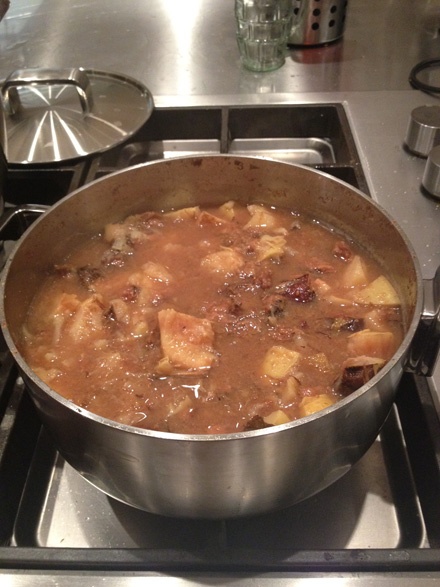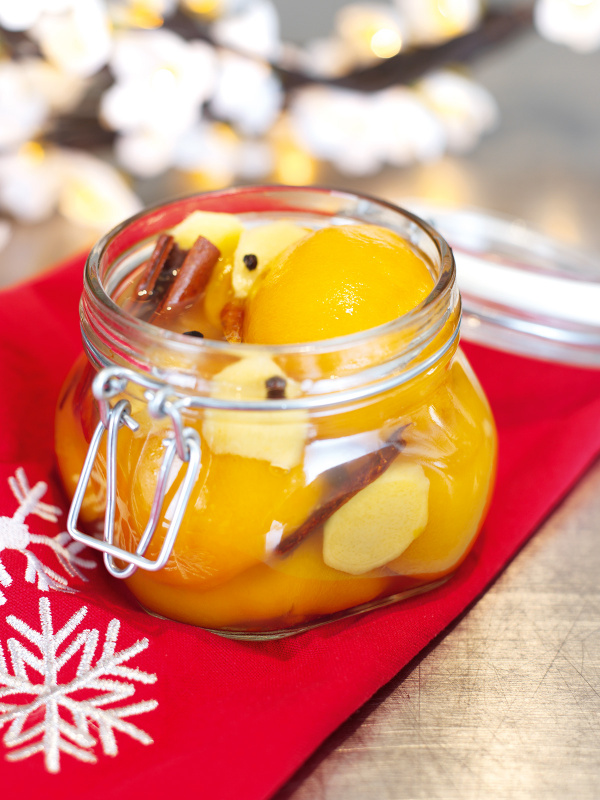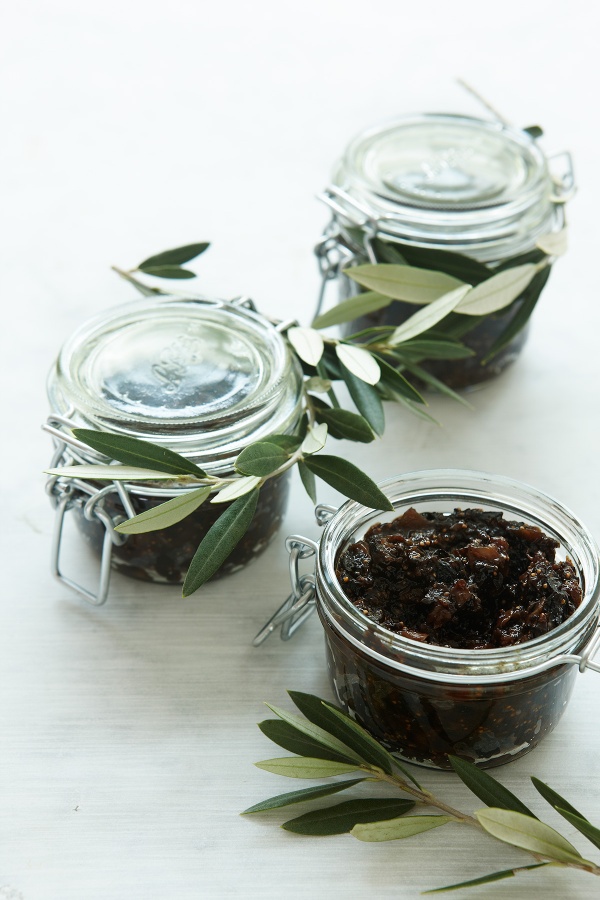I am one of life's chutney makers rather than jelly makers. True, I can stretch to jam, but there is something about the paraphernalia of jelly making - the muslin bag, the way it has to be suspended up high - that makes me doubt myself, big time. I am too impatient and too clumsy.

But a friend gave me some medlars from his garden the other day, and I felt I couldn't own up to the fact that making jelly frightened me. "Feel the fear and cook it anyway" is one of my mantras, so I clung to it and proceeded. I had only 750g of medlars, so I augmented them with a beautiful sunny-skinned quince.

So this is how I made my jelly: I took my 750g of bletted medlars (bletted means they have softened and browned to the point of rottenness just about) and halved them and put them in a pan, then chopped them finer in a rough kind of a way, with a knife straight into the pan, then added a quince (about 500g in weight) that I sliced in four across then cut in each slice into 3cm chunks.
I poured one and a quarter litres of cold water over them and brought them to the boil, then partially covered by which I mean leaving just a chink uncovered, turned down the heat and let the fruit pieces simmer for 45 minutes, by which time they were very soft. Twice during their cooking time, I pressed down with a slotted spoon to squish and mash them a bit.

Now it's ready for the jelly making fandango: I put a batter jug on the kitchen surface and erected my jelly straining kit over the top (both manageable to do and cheap to purchase, around £10 from my local, Peter Jones) then ladled the solid bits of fruit into the jelly bag, poured over the juices and left it to drip overnight. It's important not to press down on the bag at all or the jelly will not be beautifully clear at the end.

Next morning, I measured out the fruit juice and for each 250ml of liquid I added 375g sugar; I had 500ml so I added 750g jam sugar, just because I feel more secure with the extra pectin it packs, but regular sugar would be just fine, as quince has got a lot of pectin anyway. May take a little longer to set, is all. I just dissolved the sugar into the juices in a pan then brought to the boil and simmered for about 4 minutes. But before it went on the pan, I slipped two saucers into the freezer. To test the setting point, spoon a little of the bubbling liquid onto the chilled saucer, allow to cool slightly then push it with a finger. It will wrinkle slightly when it is ready. If you're the sort to feel safe with the sugar thermometer, it should be ready when it reaches 220F/105C. At this stage you can ladle or pour (using a jam funnel) into sterilised jars; mine filled one half-litre jar and one and a half 250ml jars.

Seal or put the lids on and allow to cool. Now, I have some jewel-bright, honeyed and tangy jelly for autumnal delectation.




